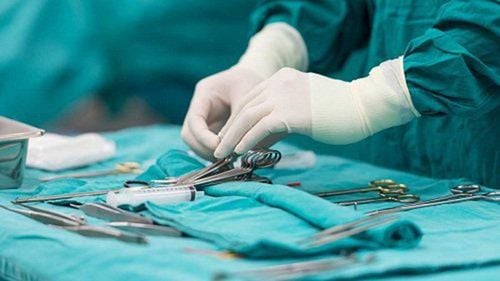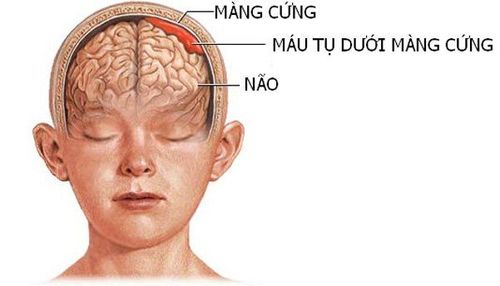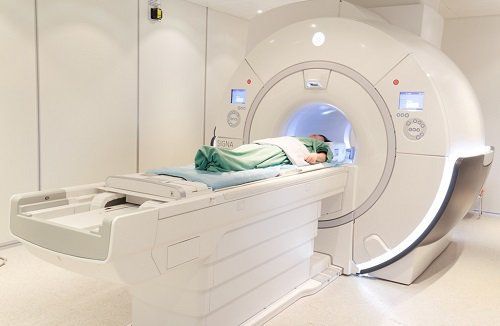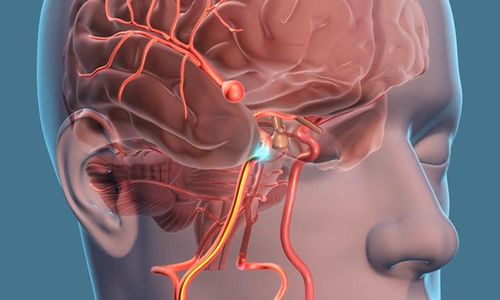This is an automatically translated article.
Cerebral aneurysm is a common disease in the elderly and sometimes in young people due to congenital, trauma or tumors and other diseases. Brain aneurysm if left untreated, not only affects the nourishment of the brain and other parts of the body, but can also cause death.1. What is brain aneurysm?
1.1. What is a brain aneurysm? Cerebral aneurysm is an enlarged or distended portion of a blood vessel in the brain, which usually occurs when the vessel wall is weak. Cerebral aneurysms can occur in any vessel segment and at any time. Cerebral aneurysm is a serious disease that leaves many dangerous complications even death.According to statistics in the United States and European countries, the incidence of cerebral aneurysm accounts for about 1.5-8%, an average estimate of 5% of the population and mainly in the age group of 50-65 years. Clinical practice shows that the prevalence of the disease in women is 1.6 times higher than in men.
1.2.Classification of cerebral aneurysms The common location of cerebral aneurysms is the branching segment of arteries in which the most common location is in the anterior communicating artery. Approximately 30% of aneurysms are in the internal carotid and posterior trunk arteries. In addition, aneurysms can be found in the cerebellar artery, basilar artery or vertebral artery...
Classification according to structure:
Aneurysm sac is a condition in which a blood vessel aneurysm is shaped like a fruit mulberry, usually occurs in bifurcated vascular branches. Clinically, mainly sacral aneurysms, which account for 66-98% of all patients with cerebral aneurysms. Dissecting aneurysms are blood clots in the endovascular wall through a tear in the endothelium. When the blood mass pushes into the lumen, it causes embolism, which is common in trauma and hypertension. Rhombus aneurysms are dilated, curved, and elongated segments of the artery. A rhabdoid aneurysm is common in atherosclerosis and structural abnormalities of the artery that are most common are the basilar artery. Infectious aneurysms account for 2-3% of all cerebral aneurysms, and are usually caused by coagulopathy seen in the warts in streptococcal or staphylococcal endocarditis. In addition, there are inflammatory aneurysms, traumatic aneurysms, tumor aneurysms or aneurysms associated with arteriovenous malformations.... Classification by size: there are many documents that divide sizes different sizes of aneurysms.
Usually cases with aneurysms smaller than 5mm will rarely rupture. Aneurysms ranging in size from 6 to 10 mm are prone to rupture causing subarachnoid hemorrhage. Giant aneurysms have little bleeding but tend to progress long-term, leaving a high risk of complications, which can be fatal after a certain time.
2. Causes and symptoms of cerebral aneurysms

Luyện tập thể thao quá sức có thể là nguyên nhân dẫn tới phình mạch não
Causes of cerebral aneurysms include:
Due to excessive exercise and sports. Due to excessive use of stimulants, especially coffee, soda... Due to improper sex. Due to trauma or other infections in the brain area. Due to compression by tumors Congenital aneurysm due to congenital malformation in the vessel wall. 2.2.Clinical manifestations of cerebral aneurysms Cerebral aneurysms are likened to a silent killer. Depending on the stage of the disease, there will be different symptoms.
Appears numbness, weakness and even paralysis of one side of the body. Dizziness headache, especially pain above and behind the eyes. Decreased visual acuity, possibly with signs of double vision. In some cases of drooping eyelids, the pupils may be dilated. The period when the aneurysm burst can cause a common cerebrovascular hemorrhage with the following manifestations:
Sudden and severe headache accompanied by nausea and vomiting. Stiff neck, possibly fainting. Blurred vision, sensitive to light, may have signs of double vision. Eyelid drooping Confusion or loss of consciousness, memory loss, confusion. Convulsions may occur.
3. Is brain aneurysm dangerous?
The brain is an important organ in the body, the upper and front part of the central nervous system, and the major organ in the operating system of the peripheral nervous system. The brain creates advanced activities such as thinking, calculating, imagining...All body activities include all activities of the circulatory, excretory, digestive, respiratory... All must be controlled by the brain. Therefore, when the nourishing blood vessels of the brain are diseased, it will affect all vital activities of the body.
Brain aneurysm if left untreated, not only affects the nourishment of the brain, other parts of the body, but can also cause death. Common complications of cerebral aneurysm include:
For small aneurysms, if not detected and treated in time, the size of aneurysm will gradually increase, compressing the brain and leaving behind when ruptured. unpredictable complications such as cerebral haemorrhage... May rupture recurrent aneurysms. The aneurysm compresses the cerebrospinal fluid and obstructs the cerebral circulation. From there, it can cause cerebral ischemia and cerebrovascular accidents such as cerebral infarction. Causes electrolyte disturbances Cerebral aneurysms can be a risk factor for infections in blood vessels or other parts of the brain.
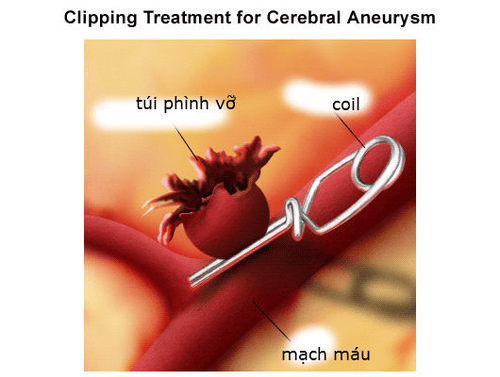
Phình mạch máu não là một bệnh lý nguy hiểm, nguy cơ để lại di chứng cao thậm chí là tử vong
Vinmec Da Nang International General Hospital has successfully implemented the technique of plugging cerebral aneurysms with a success rate of > 95%. The surgery was performed by a team of experienced specialists:
Dr. Dr. Ton That Tri Dung Ths.Bs Huynh An Nhien Ths.Bs Nguyen Thanh Nam Modern equipment supports doctors during surgery. Surgery as well as the patient's resuscitation process, which can be mentioned as: DSA GE, MRI 3.0, CT 640 series
Please dial HOTLINE for more information or register for an appointment HERE. Download MyVinmec app to make appointments faster and to manage your bookings easily.




